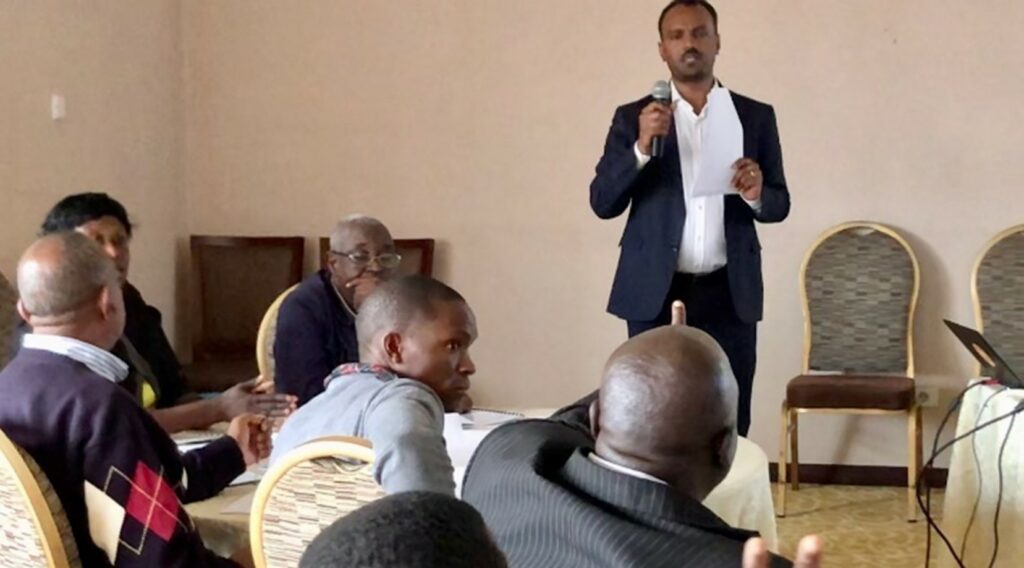Deliverable: Instructional videos
Imagine you’re a nurse in rural clinic in a low-income country like Mozambique. You and two other nurses are responsible for an entire practice, which serves all the small villages in the area. Counted among your long list of responsibilities, you are expected to immunize the children in your area, many of whom do not visit the clinic and/or have parents who are ambivalent at best and actively resistant at worst. This can be a significant challenge.
Immunizing babies is harder than it seems
Here in higher income countries, immunization appears to be a rather simple thing. You bring your kids to a routine checkup, a doctor says she’s due for a vaccination, and she receives it. Behind the scenes, things are a bit more complicated.
A clinic needs to have vaccines available, which means that, unlike with other medicines which are just prescribed, the practice needs an effective inventory management system. Further, since vaccines are live biologic agents, their temperatures must be kept within specific ranges from the point of manufacture to the point of administration and every step in between. This not only means they have to be stored and handled properly, it means clinic staff need to be able to determine if, at any prior step, temperature integrity has been violated. That’s only a partial list of the work required to manage effective immunization programs. Now imagine accomplishing these things in an environment where power can be intermittent, tools and technologies are often primitive, and a good portion of your patient population has little to no interaction with the health system.
National health systems and global health agencies recognize the significant burden that immunization programs place on front line health workers. Yet for a whole host of reasons, some understood and others not, these professionals receive little immunization training pre-service and virtually none once they enter the field. The only way the global health community is going to reach its goal of 90% immunization coverage by 2030 is if it finds some way to get training into the hands of front-line health workers.
Limited time and inadequate infrastructure
BCL set out to move the dial on this problem. With funding from the Bill & Melinda Gates Foundation, BCL created the Immunization Academy (IA). Our goal with IA was to find a way to bypass the economic, administrative, and political barriers to getting health workers trained. Our intent was to distribute training directly to health workers using technologies already available to them – their phones.
To achieve this goal, we elected to create a library of short videos each teaching a specific immunization skill. For the videos to be accepted, we knew health workers would need to believe the content was relevant to them. For that reason, we based all of the content on approved WHO guidance and shot the videos in health clinics around Tanzania (we since have added video shot in India and Pakistan, among other places). To maximize reach and utility, the videos were made available in eight languages.
Immunization training in the palm of your hand
For us to get maximum uptake, we needed to find ways to distribute the videos to health workers as directly as we could. This meant using the internet for distribution and sizing the videos so that they can be streamed with minimal latency in low bandwidth settings (this was also important to minimize their data costs). Since the only devices we could count on being available in all clinics were health worker phones, we designed the videos to be viewable on mobile phones. And since internet (and even power) can be sporadic, users can access the videos either online or offline.
We also provided several access points for the almost 200 videos. One is the IA portal, which houses all videos and includes value added features like the ability to save videos, create playlists, and track learning activity. Another is the IA YouTube channel, which houses all of the videos that are in English. Finally, we’ve worked with the ministries of health in several countries to make the videos available on Android aps.
Impacting almost 1 million people
IA has been exceptionally well received by the global health community. Since launching, we’ve had over 900,000 unique users from over 180 countries. IA videos have millions of views. And we’ve worked with a number of countries, like Ethiopia, Kenya, DRC, and others to implement country-specific versions of IA. We even have data suggesting that the use of IA in clinics has led to improved health outcomes.





